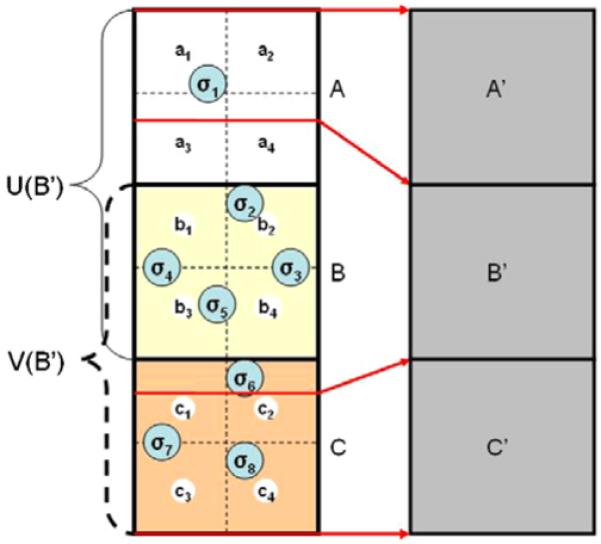Figure 1.

Three source voxels {A, B and C} are mapped to the target voxels {A’, B’, C’} via the DVF indicated by the red arrows. Each source voxel can be subdivided into multiple smaller subvoxels ({a1, . . . , a4}, {b1, . . . , b4}, . . .). Consider voxel B’. V(B’) is the set of source voxels which contribute energy deposition events {σ2, . . ., σ6} to voxel B’, therefore V(B’) = {B, C}. U(B’) is the set of source voxels which contribute mass from the center of their subvoxels to voxel B’. Therefore, U(B’) = {A, B}. As the number of subvoxels tends toward infinity, V(B’) ⊆ U(B’).
